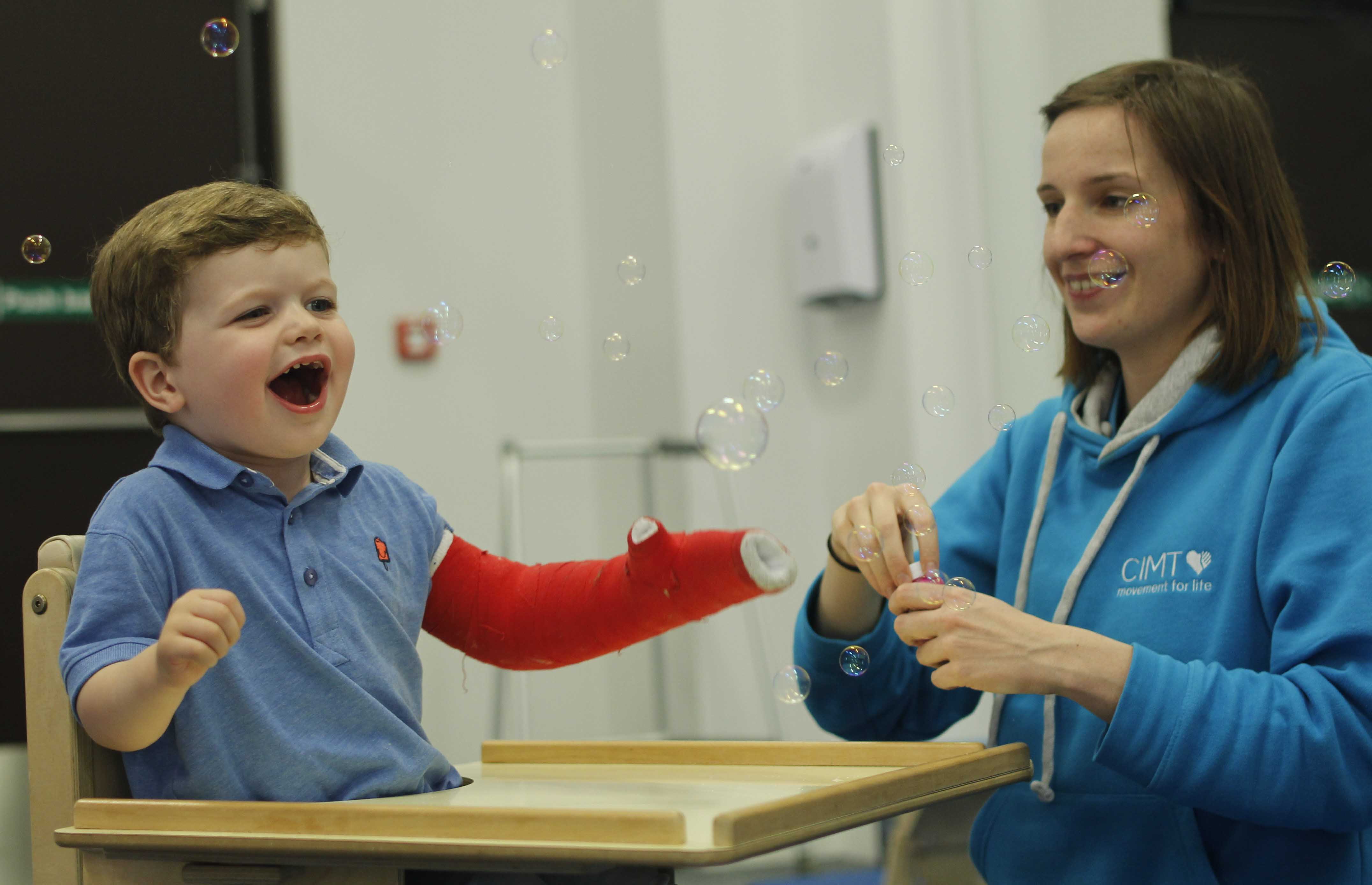Evidence has shown that practising exercises with the weaker arm while restraining the normally functioning arm over a period of time leads the brain to rewire itself. This then allows the person to learn new motor activities or relearn motor skills that may have been lost.
CIMT may be used shortly after neurological injury, to make the most of the brain’s ability to change during this period. It is also suitable for people in the later stages of rehabilitation whose progress may have plateaued.
 Above: Our physiotherapist enjoying a CIMT session with our lovely little client.
Above: Our physiotherapist enjoying a CIMT session with our lovely little client.Improvements in hand function are achieved by:
- Intense, repetitive task practise using the weaker arm
- Reduced compensatory activity with the unaffected side by restraint in a mitt/glove
- Re-directing the person’s attention to the weaker arm by focusing on using this arm in structured activities and functional tasks.
- Repeating these activities over a period of time that result in successful and positive experiences with the weaker arm.
- Increasing the person’s motivation to use the weaker arm, through success in fun and interesting activities that may have seemed impossible before.

 0330 088 7800
0330 088 7800

































